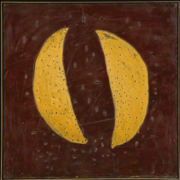Polyphony of body in psychoanalysis. The body in the psychoanalytic research. New pathologies and psychoanalytic clinic
Presentation The actual curation of this journal issue began a year after it had been proposed to the editorial staff. For a full year there had been no response from the authors. Coronavirus arrived. And there came a flood of contributions, a widespread enthusiasm was animated: themes, styles, models, original and valuable lexicons multiplied with various thematic perspectives. We did not know what started all of a sudden: sometimes the engine runs, but the starter does not, sometimes the opposite happens. This time they had both had a good start after an empty time. Sometimes the unconscious, either common or single, is located in the most unexpected and difficult to see places, and it reveals itself with a movement of vital emergence.
This edition on the body is therefore necessarily vast, alive and varied. We have tried to read it and return it with a formal order, but we believe that the boundaries of the contributions are so vibrant and current that they overflow from any frame, like certain futurist paintings that continue the drawing on the frame.
After all, at this moment we all experience the de-private and suddenly subtracted body. Forced as healers, teachers, operators, students, psychoanalysts, to migrate from the multisensory live of presence, we gradually witness the reduction of the senses, the bi-sensoriality of the online setting that unfolds in images and audio subject to autonomous and independent connective fluctuations of our will. We are no longer direct guarantors of the setting, of its material and sensorial components, to which we were used to assigning meaning – first of all, to distance. This elsewhere that is here, in front of us, is a perturbing place, so familiar and foreign at the same time. It is capable of generating the illusion of movement, only to then constitute itself as a still photograph or fall into the abyss of the black screen. Others choose the one-sensorial holding of telephone listening. Remote contact, yes, but how? We all make a physical and mental effort “remotely”. So, who knows if this flood of our contributions did not come precisely from the strength of the psychosomatic bond, from the momentum of the body that once it leaves the door of the pandemic returns through the window? Surely, we listen more today to the destinies and the memory of the body, which brings life and passes on the remote experience.
We wish all readers a good reading and thank them together with the authors for their participation.
Stefania Marinelli and Adelina Detcheva


